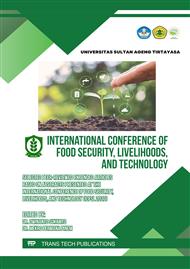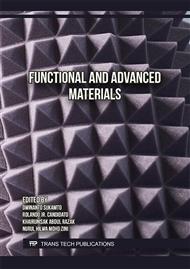p.33
p.41
p.49
p.59
p.65
p.79
p.89
p.97
p.105
The Effect of Leaching Time on ZrO2 Synthesis through Alkali Fusion and Acid Leaching
Abstract:
Zircon (ZrSiO4) is one of Indonesia's most abundant mineral reserves that have yet to be fully utilized since zircon mine production in Indonesia is only 110.000 tons/year while Australia produces zircon up to 500.000 tons/year. Indonesia has 167 million tons of zircon sand reserves, especially in West Kalimantan. One of the most efficient methods of zircon sand processing in terms of energy use and environmental pollution is the alkali fusion of NaOH. This study used zircon sand with NaOH, a stoichiometric ratio of 1:4 (excess 1.5), to be roasted in a muffle furnace at 600°C for 120 min. The following process is washing the frit with water, and the frit is dissolved with aquades with ratio frit: H2O=1g:10 ml at 30°C and stirring 300 rpm for 60 min. The frit leaching solution is filtered to obtain Na2ZrO3. The water-wash product is leached using HNO3 as the leaching agent with the ratio of water-wash product: HNO3=1:5, the acid concentration is 6 M, at 90°C, agitation use 260 rpm with the variation of time 60, 120, 180, 240, and 300 minutes. The pregnant leach solution is deposited with NH4OH and calcinated. According to the results of this experiment, the optimum time to obtain high Zr extraction is 240 minutes. This research produced single-phase zirconia with a cubic crystal structure containing 91.23% ZrO2 and 1.18% SiO2.
Info:
Periodical:
Pages:
65-75
Citation:
Online since:
October 2023
Authors:
Keywords:
Price:
Сopyright:
© 2023 Trans Tech Publications Ltd. All Rights Reserved
Share:
Citation:



